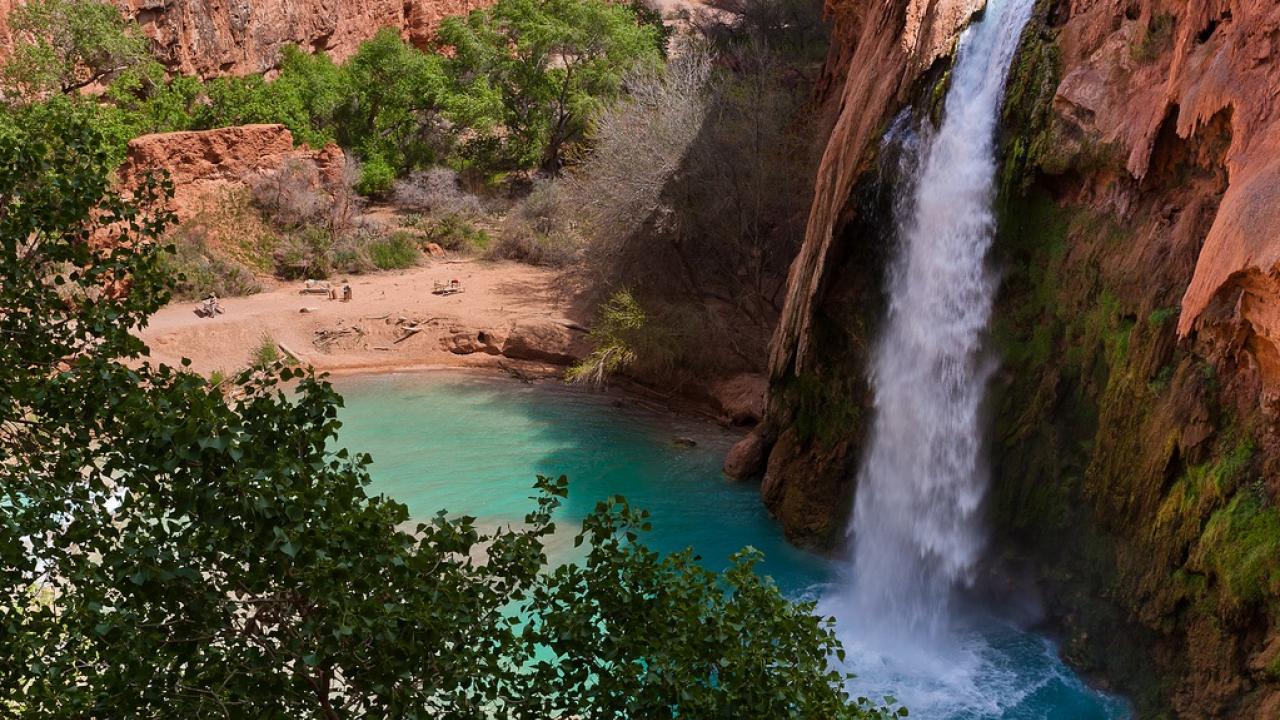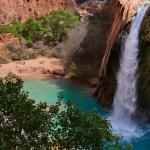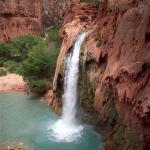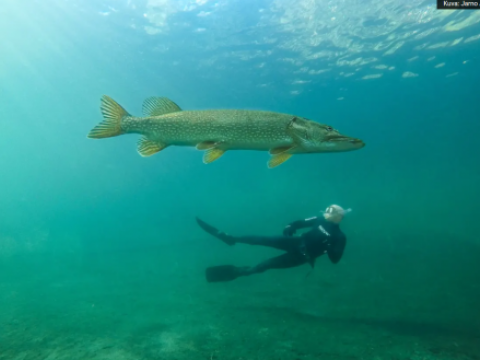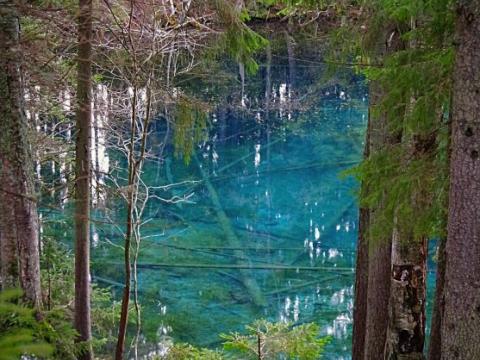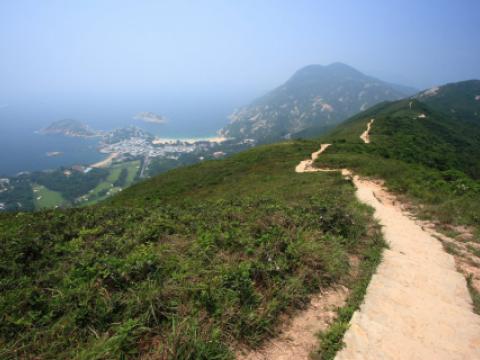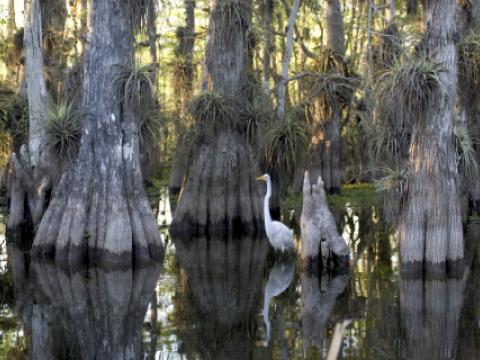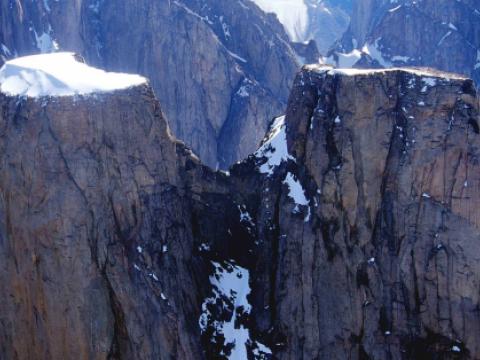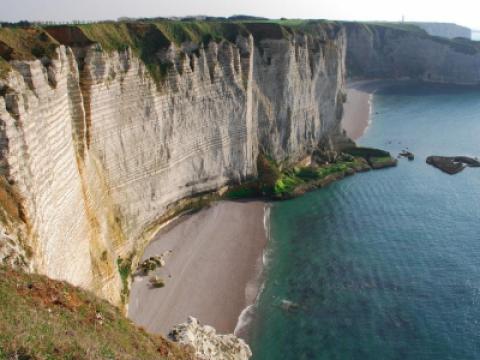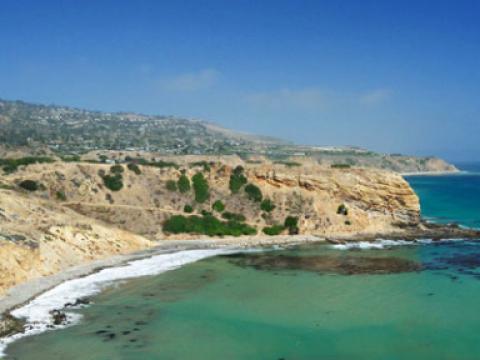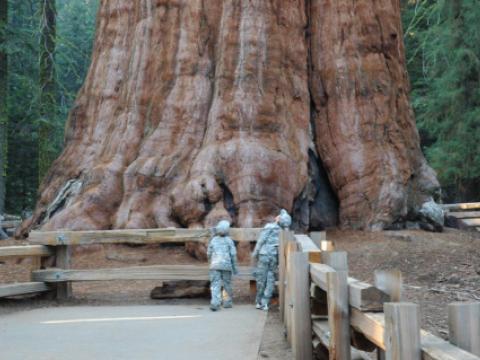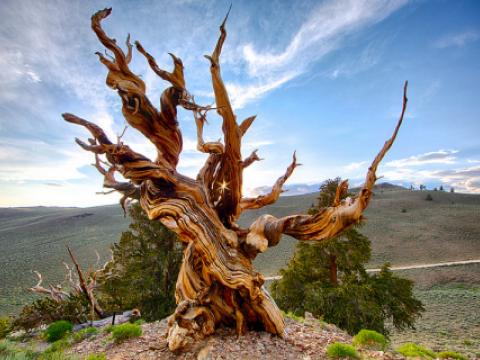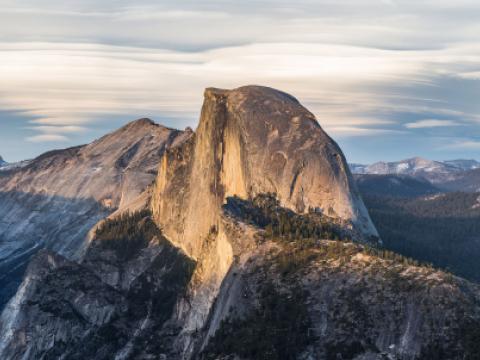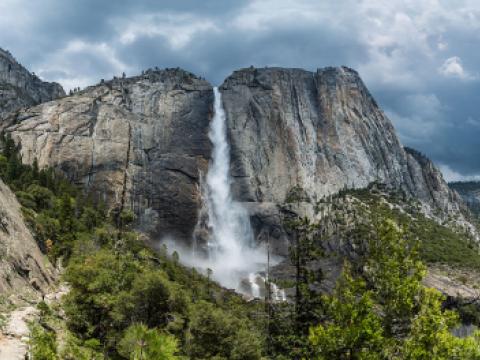Location
The Havasu Falls plunge nearly 100 feet (27m) into a natural pool of blue-green waters in the Havasupai tribal lands in Grand Canyon. These are one of the most striking waterfalls in the Grand Canyon.
The minerals in the water form natural pools below the falls and creates perfect setting for swimming in the turquoise water. Next to the pools, there are plenty of cottonwood trees to relax by.
Due to the high mineral content of the water, the configuration of the falls and pools is ever-changing. The falls sometimes breaks into two separate chutes of water and the pools can be damaged or destroyed by large floods that wash through the area.
The trailhead to Havasupai Falls begins at Hualapai Hilltop. The Hilltop can be reached at the end of Indian Road 18 which is 65 miles north of Route 66.
Once you get to the hilltop (by car) you can start the 10 mile hike along the Havasupai Trail to the Havasu Falls. Better to take enough water and protection from sun for this leg.
If you don’t feel like hiking, there is helicopter service or horses available for a fee. You may also pay for the helicopter or mules to take your backpacking gear.
It is IMPORTANT to know that only a limited number of visitors are given permits to enter. Thus, reservations for camping and hotels are booked even 6 months in advance. You can find info about the reservations and camping permits at the Grand Canyon National Park website.
Driving times to Hualapai Hilltop,
from Flagstaff: 3-4 hour drive
from Phoenix: 5-6 hour drive
from Las Vegas: 3-4 hour drive
from Kingman: 2-3 hour drive
Entrance Fee Permit: $35.00 per person
Campground Fee: $17.00* per person / per night
Environmental Care Fee: $5.00* per person
There are also guided hiking and camping tours into Havasupai provided by private adventure tour companies, for example http://www.wildlandtrekking.com/adventurehikes/havasufalls.html
Also rafting tours are organiced in the area, for example http://www.westernriver.com/trips/grandcanyon/







